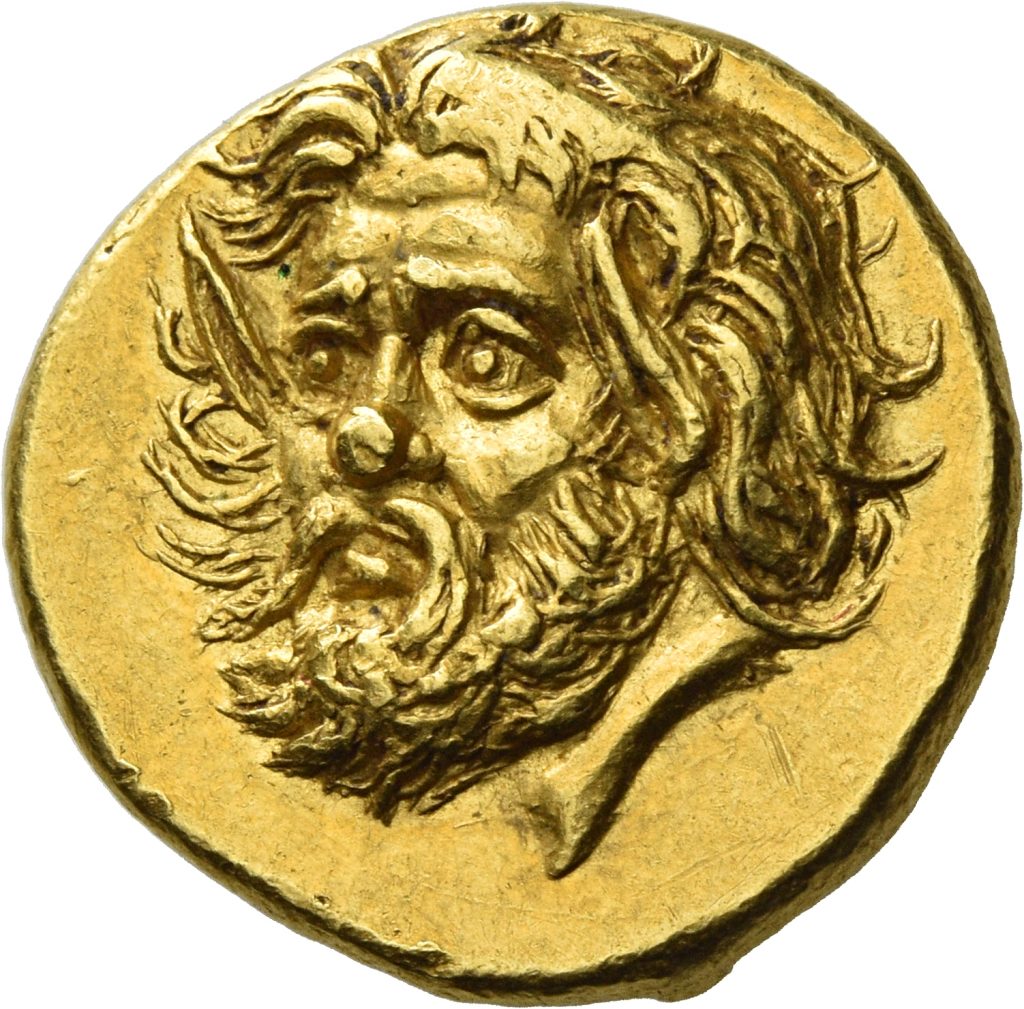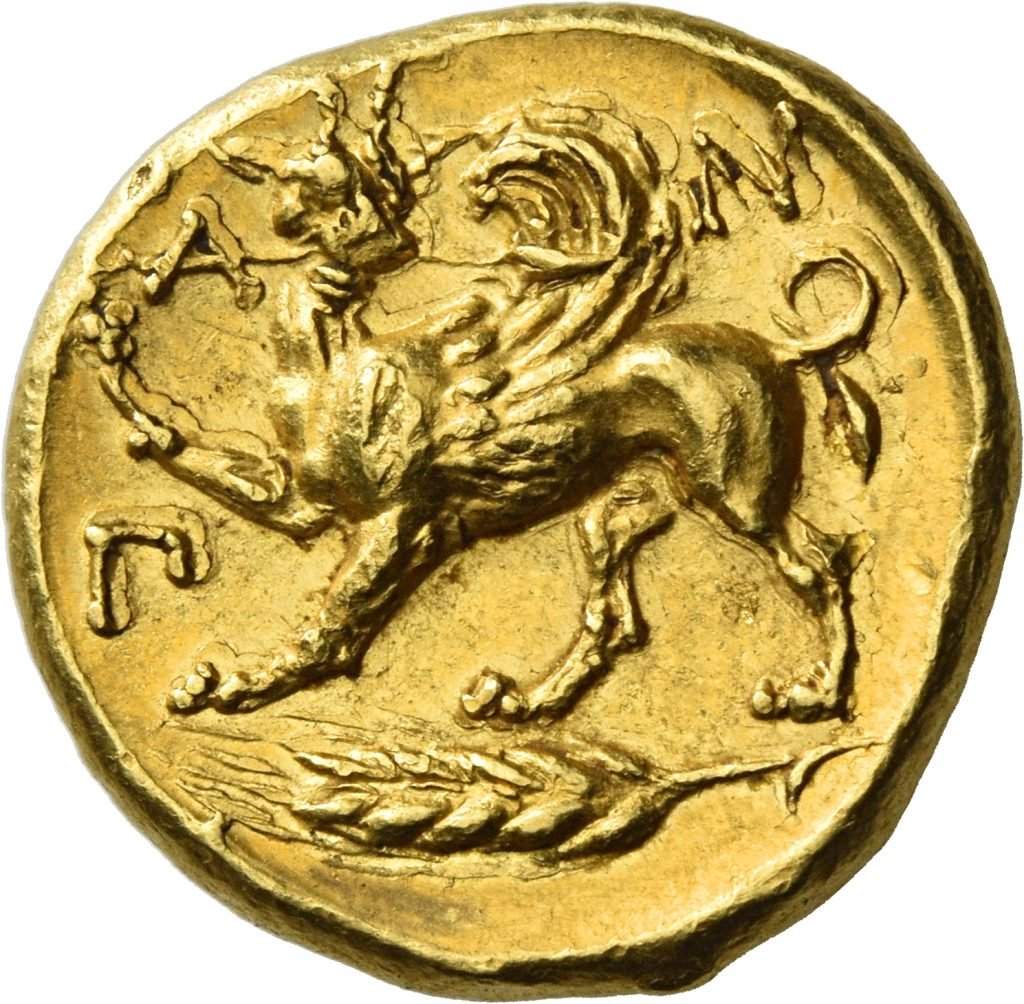A private collector has spent a pretty penny to get his hands on a 2,000-year-old gold Greek coin.
Known as the Panticapaeum stater, after the ancient Greek city in modern-day Crimea, the coin fetched $6 million at Numismatica Ars Classica in Switzerland, making it the most expensive ancient coin ever sold at auction. .
The price spike has been attributed to the quality, rarity of the piece, and the fact that the supply of similar specimens is extremely limited, with most already housed in museums.
“I am extremely satisfied with the phenomenal result of the sale of the Panticapaeum stater at our last auction in Zurich,” said Arturo Russo, co-director of Numismatic Ars Classica, said in a statement. “It’s a sign that the whole numismatic market is booming, and that it’s particularly strong for oldies right now.”

Obverse of the stater of Panticapaeum, circa 340-325 BC. Photo courtesy of Numismatica Ars Classica.
The coin was minted around 340-25 BCE and features a wide-eyed satyr on the obverse and that of a griffin holding a spear in its beak on the reverse. The presence of the satyr, a troublemaker in Greek mythology who resembles a man with horse ears and a tail, is thought to refer to King Satyros I, who ruled a Greco-Scythian empire in eastern Greece. Crimea from 432 to 389 BCE.
The sharp details allow numismatists to believe that the coin is the work of a master engraver. Unlike similar coins, this Panticapaeum stater features the satyr turned three-quarters to the left, as opposed to facing completely left, a detail that experts believe was altered in an attempt to keep up with contemporary fashions.

Reverse of the stater from Panticapaeum, circa 340-325 BC. Photo courtesy of Numismatica Ars Classica.
The piece was part of the collection of the Hermitage Museum for a long time, but was sold in 1934 as part of Stalin’s drive to sell works of art in order to raise foreign currency to finance national industrial growth. The piece was acquired by Charles Gillet, a French industrialist who focused on collecting rare books, furniture and antiques, including coins.
THE previous record for the most expensive ancient coin sold at auction was one of only three known “Ides of March” coins, which was minted in 42 BCE and commemorated the assassination of Julius Caesar. It sold at the Roma Numismatics auction house for $4.2 million in 2020, but, ultimately, with falsified provenance.
More trending stories:
Sculpture depicting King Tut as a black man sparks international outrage
Where is the art today? Here are some critical impressions gleaned from the Frieze New York Art Fair
Follow Artnet News on Facebook:
Want to stay one step ahead of the art world? Subscribe to our newsletter to receive breaking news, revealing interviews and incisive reviews that move the conversation forward.
